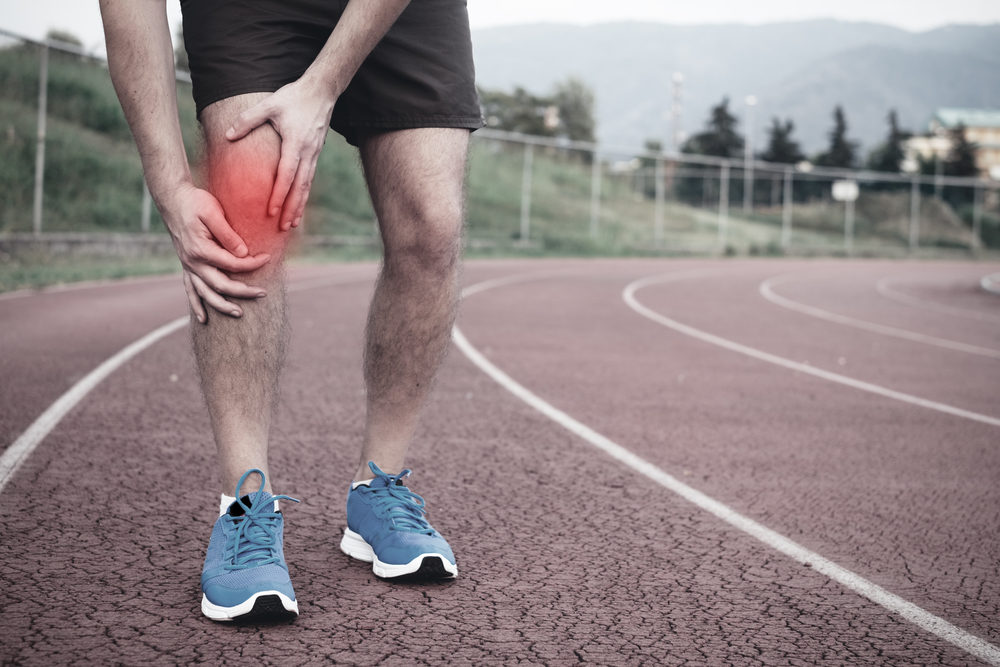Do your knees ache when you hit the track? Try these four simple tips to protect your joints and avoid knee pain.
Running comes with a lot of perks: most obviously, it’s a great way to build cardiovascular strength and maintain a healthy weight. What’s more, avid runners aren’t locked into an expensive gym membership or set class schedule. It can be done anytime of the day, and the only investment a runner must make is purchasing a good pair of supportive shoes.
Yet for all its positives as a fitness routine, running can be hard on the knees. Due to this constant pressure, runners may experience the discomfort of “runner’s knee,” a term that refers to a number of injuries affecting the tendons and tissues of the joint.
WHAT’S CAUSING YOUR KNEE PAIN?
Runner’s knee can stem from several different conditions, the most common of which is iliotibial (IT) band syndrome. Made up of fibrous tissue, the IT band stretches from the hip to the knee. Its main function is to encase and stabilize the muscles around the joint, which allows the knee to easily move and flex.
Regular trips around the running track put the IT band in frequent contact with the lateral femoral epicondyle, a bony protrusion at the side of the knee. This friction can lead to pain and limited movement. Other symptoms of IT band syndrome include swelling and a popping noise in the knee.
Another common ailment suffered by runners is patellofemoral pain syndrome. This condition is marked by pain under and around the kneecap that worsens when walking up or down stairs, squatting, or kneeling down. Typically the result of overuse, patellofemoral pain comes about when the tendons and cartilage underneath the kneecap become inflamed. A kneecap out of alignment, weak or tight thigh muscles, and flat feet can also cause this condition.
In addition, regular runners are prone to knee bursitis, an inflammation of the fluid-filled bursa sac that lubricates and surrounds the joint. Runners whose feet turn inward or who frequently trek downhill are more likely to suffer from knee bursitis. Patellar tendonitis, also known as “jumper’s knee,” often strikes runners as well. As you run, the patellar tendon that connects the kneecap to the shin continually flexes and bends. Too much movement can irritate this tendon, leading to a burning pain around the kneecap and stiffness in the leg.
HOW TO PREVENT KNEE PAIN
To protect their knees from pain, runners should follow a few basic precautions. Here are four tips that will help keep your knees healthy and mobile.
- Get proper-fitting shoes. Good running shoes should be comfortable, while also providing enough support to cushion your knees from the intense pounding the joints sustain while you run. Runners who have flat feet should lift their insoles with an orthotic insert.
- Build up speed. Prevent knee injuries by gradually increasing your running speed. Start slow, and then quicken your pace as you increase your mileage. This permits your body to warm up properly, and gives your knees time to get accustomed to the stress of the activity.
- Stretch before and after a run. Make sure to stretch your leg muscles before and after you hit the track. Warming up and cooling down the muscles helps you avoid sprains and strains.
- Vary your workouts. Supplement your running with exercises that build muscle strength (i.e. weightlifting and squats) and improve flexibility (yoga). You’ll also want to give your knees a break by alternating your runs with low-impact workouts, such as swimming or riding an elliptical bike.
If your knee pain persists or intensifies, your should consult an orthopedic specialist. Fortunately, most cases of runner’s knee can be treated successfully with conservative interventions such as rest, physical therapy, and anti-inflammatory medications. Book an appointment with New York Bone & Joint Specialists today for a personalized consultation.




